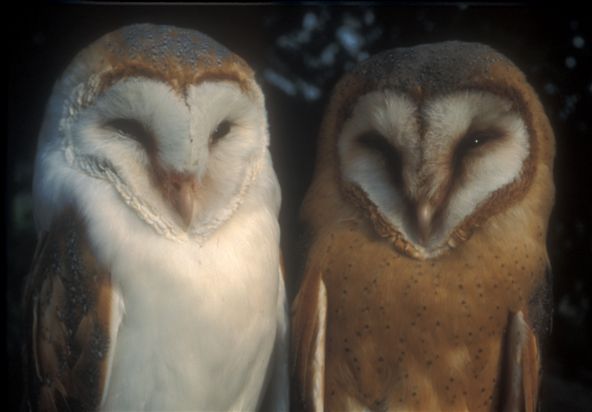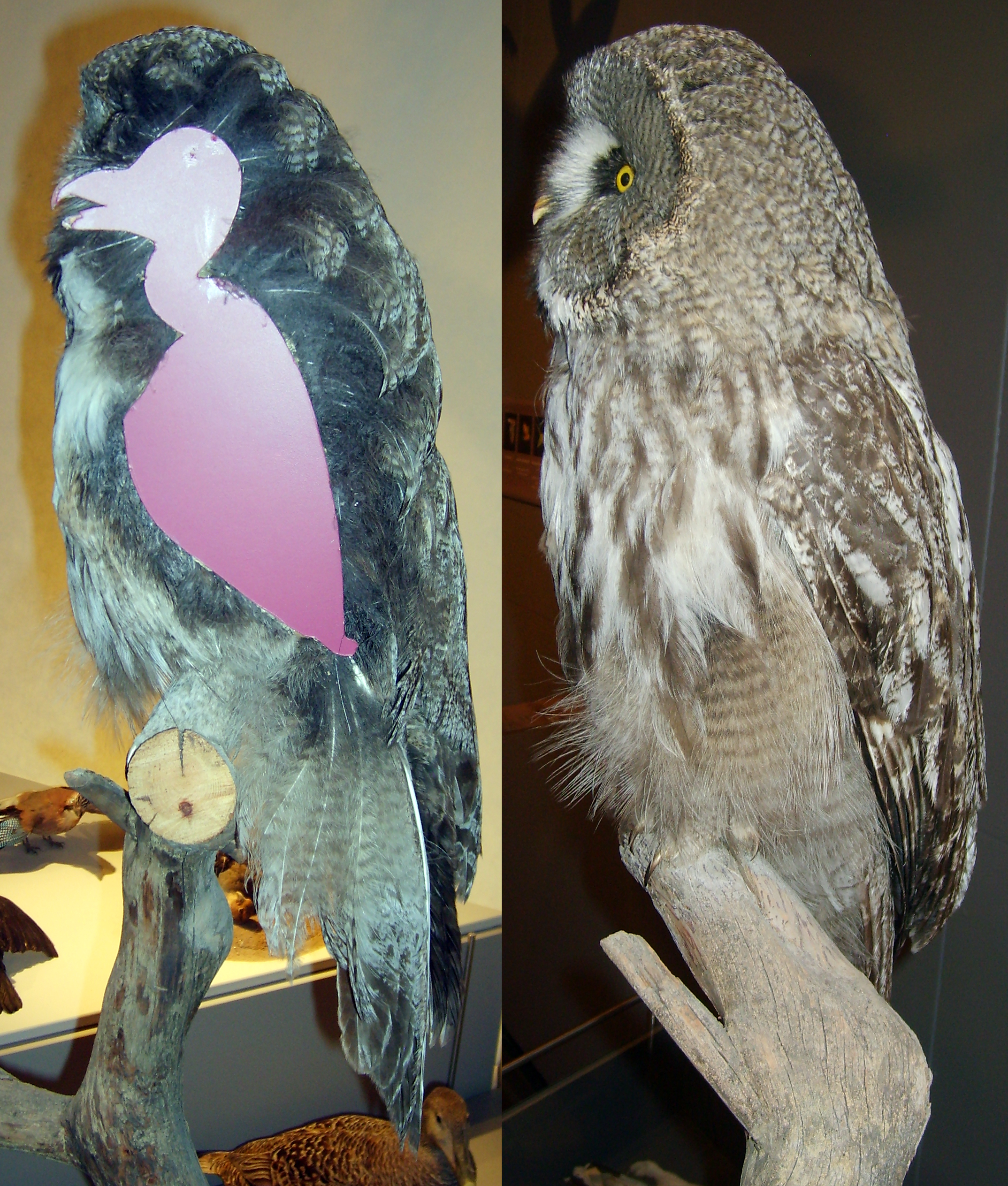|
Tytonidae
The bird family Tytonidae, which includes the barn owls ''Tyto'' and the bay owls ''Phodilus'', is one of the two Family (biology), families of owls, the other being the true owls or typical owls, True owl, Strigidae. They are medium to large owls with large heads and characteristic heart-shaped faces. They have long, strong legs with powerful Talon (anatomy), talons. They also differ from the Strigidae in structural details relating in particular to the sternum and feet.Bruce, M. D. (1999): Family Tytonidae (Barn-owls). ''In:'' del Hoyo, J.; Elliott, A. & Sargatal, J. (eds): ''Handbook of Birds of the World Volume 5: Barn-owls to Hummingbirds'': 34-75, plates 1-3. Lynx Edicions, Barcelona. The family is wide-ranging, although they are not very tolerant of severe winter cold, so are absent from northern areas of Europe, Asia, and North America; they are also absent from driest desert regions. They live in a wide range of habitats from desert, semi-deserts to forests, and from tem ... [...More Info...] [...Related Items...] OR: [Wikipedia] [Google] [Baidu] |
Tyto
''Tyto'' is a genus of owls in the family Tytonidae. Depending on the species and the locality, common names include barn owl, common barn owl, grass owl, sooty owl, masked owl, field owl or simply owl. It is the most widely distributed genus of owls in the world and one of the most widespread of all genuses of birds, living almost everywhere except for polar and desert regions, Asia north of the Himalayas, some Indonesian islands and some Pacific Islands. The genus comprises three widespread continental species and many island species including the extinct island species. The widespread species comprise: western barn owl of Europe, western Asia and Africa, the eastern barn owl of Southeast Asia and Australasia, and the American barn owl of the Americas. However, some taxonomic authorities classify barn owls differently, and unify all continental barn owls in to one species. Further research is needed clarify the taxonomies. There is considerable variation of size and co ... [...More Info...] [...Related Items...] OR: [Wikipedia] [Google] [Baidu] |
Tyto Alba
The western barn owl (''Tyto alba'') is a species of barn owl ''Tyto'' native to Europe, southwestern Asia, and Africa. It was formerly considered a subspecies group together with barn owls native to other parts of the world, but this classification was found to be paraphyletic with respect to some other members of the genus. The plumage on the head and back is a mottled shade of grey or brown; that on the underparts varies from white to brown and is sometimes speckled with dark markings. The facial disc is characteristically large and heart-shaped, with white plumage in most subspecies. This owl does not hoot, but utters an eerie, drawn-out screech. The western barn owl is nocturnal over most of its range, but in Great Britain, it also hunts by day. Barn owls specialise in hunting animals on the ground, and nearly all of their food consists of small mammals, which they locate by sound, their hearing being very acute. The owls usually mate for life unless one of the pair is kill ... [...More Info...] [...Related Items...] OR: [Wikipedia] [Google] [Baidu] |
Bay Owl
The bay owls (''Phodilus'') are a genus of Old World owls in the family Tytonidae. The defining characteristics of bay owls are their smaller bodies, in comparison to the barn owls ''Tyto'' in the same family, and their U- or V-shaped faces. These owls can be found across southern Asia from southern India and Sri Lanka to Indonesia within forest and grassland ecosystems. Taxonomy and systematics The genus ''Phodilus'' was described by the French zoologist Isidore Geoffroy Saint-Hilaire in 1830. Most taxonomists include two extant species in the genus; a third formerly included has now been transferred to ''Tyto''. The name is from the Ancient Greek ''phōs'' for "light" or "daylight" and ''deilos'' for "timid" or "cowardly". The Itombwe owl (''Tyto prigoginei'') was formerly classified in this genus as the Congo bay owl, but morphological evidence shows that it is a member of the genus ''Tyto ''Tyto'' is a genus of owls in the family Tytonidae. Depending on the species and ... [...More Info...] [...Related Items...] OR: [Wikipedia] [Google] [Baidu] |
Western Barn Owl
The western barn owl (''Tyto alba'') is a species of Tyto, barn owl ''Tyto'' native to Europe, southwestern Asia, and Africa. It was formerly considered a subspecies group together with barn owls native to other parts of the world, but this classification was found to be paraphyletic with respect to some other members of the genus. The plumage on the head and back is a mottled shade of grey or brown; that on the underparts varies from white to brown and is sometimes speckled with dark markings. The facial disc is characteristically large and heart-shaped, with white plumage in most subspecies. This owl does not hoot, but utters an eerie, drawn-out screech. The western barn owl is nocturnal over most of its range, but in Great Britain, it also hunts by day. Barn owls specialise in hunting animals on the ground, and nearly all of their food consists of small mammals, which they locate by sound, their hearing being very acute. The owls usually mate for life unless one of the pair i ... [...More Info...] [...Related Items...] OR: [Wikipedia] [Google] [Baidu] |
True Owl
The true owls or typical owls (family (biology), family Strigidae) are one of the two generally accepted families of owls, the other being the barn owls and bay owls (Tytonidae). This large family comprises 230 living or recently extinct species in 24 genus, genera. The Strigidae owls have a cosmopolitan distribution and are found on every continent except Antarctica. Morphology While typical owls (hereafter referred to simply as owls) vary greatly in size, with the smallest species, the elf owl, being a hundredth the size of the largest, the Eurasian eagle-owl and Blakiston's fish owl, owls generally share an extremely similar body plan.Marks, J. S.; Cannings, R.J. and Mikkola, H. (1999). "Family Strigidae (Typical Owls)". ''In'' del Hoyo, J.; Elliot, A. & Sargatal, J. (eds.) (1999). ''Handbook of the Birds of the World. Volume 5: Barn-Owls to Hummingbirds.'' Lynx Edicions. They tend to have large heads, short tails, cryptic plumage, and round facial discs around the eyes. Th ... [...More Info...] [...Related Items...] OR: [Wikipedia] [Google] [Baidu] |
Handbook Of Birds Of The World
The ''Handbook of the Birds of the World'' (HBW) is a multi-volume series produced by the Spanish publishing house Lynx Edicions in partnership with BirdLife International. It is the first handbook to cover every known living species of bird. The series was edited by Josep del Hoyo, Andrew Elliott, Jordi Sargatal and David A. Christie. All 16 volumes have been published. For the first time an animal class will have all the species illustrated and treated in detail in a single work. This has not been done before for any other group in the animal kingdom. Material in each volume is grouped first by family, with an introductory article on each family; this is followed by individual species accounts (taxonomy, subspecies and distribution, descriptive notes, habitat, food and feeding, breeding, movements, status and conservation, bibliography). In addition, all volumes except the first and second contain an essay on a particular ornithological theme. More than 200 renowned spec ... [...More Info...] [...Related Items...] OR: [Wikipedia] [Google] [Baidu] |
Red Owl
The red owl (''Tyto soumagnei'') is an owl in the barn owl family Tytonidae. It is also known as the Madagascar red owl, Madagascar grass-owl, Soumagne's owl or lesser grass-owl. It is a rare resident of Madagascar that was virtually unknown from its discovery in 1876 to its rediscovery by researchers from the World Wide Fund for Nature in 1993. It is currently listed as vulnerable because of habitat loss, but recent studies have determined it may have a wider range than first believed, though further research in distribution and ecology is required. It has possibly been overlooked because of its close resemblance to the closely related barn owl. The red owl resembles the cosmopolitan barn owl but is smaller (27–30 cm) and has rich orange plumage with small black spots. It is known to live in humid evergreen forest and dry deciduous forest in the east of the island, being found in primary forest and in disturbed secondary forest (possibly even human altered open areas). I ... [...More Info...] [...Related Items...] OR: [Wikipedia] [Google] [Baidu] |
True Owl
The true owls or typical owls (family (biology), family Strigidae) are one of the two generally accepted families of owls, the other being the barn owls and bay owls (Tytonidae). This large family comprises 230 living or recently extinct species in 24 genus, genera. The Strigidae owls have a cosmopolitan distribution and are found on every continent except Antarctica. Morphology While typical owls (hereafter referred to simply as owls) vary greatly in size, with the smallest species, the elf owl, being a hundredth the size of the largest, the Eurasian eagle-owl and Blakiston's fish owl, owls generally share an extremely similar body plan.Marks, J. S.; Cannings, R.J. and Mikkola, H. (1999). "Family Strigidae (Typical Owls)". ''In'' del Hoyo, J.; Elliot, A. & Sargatal, J. (eds.) (1999). ''Handbook of the Birds of the World. Volume 5: Barn-Owls to Hummingbirds.'' Lynx Edicions. They tend to have large heads, short tails, cryptic plumage, and round facial discs around the eyes. Th ... [...More Info...] [...Related Items...] OR: [Wikipedia] [Google] [Baidu] |
Nocturnal
Nocturnality is a ethology, behavior in some non-human animals characterized by being active during the night and sleeping during the day. The common adjective is "nocturnal", versus diurnality, diurnal meaning the opposite. Nocturnal creatures generally have highly developed senses of hearing (sense), hearing, olfaction, smell, and specially adapted eyesight. Some animals, such as ferrets, have eyes that can adapt to both low-level and bright day levels of illumination (see metaturnal). Others, such as bushbaby, bushbabies and (some) bats, can function only at night. Many nocturnal creatures including tarsier, tarsiers and some owl, owls have large eyes in comparison with their body size to compensate for the lower light levels at night. More specifically, they have been found to have a larger cornea relative to their eye size than diurnal creatures to increase their : in the low-light conditions. Nocturnality helps wasps, such as ''Apoica flavissima'', avoid hunting in intens ... [...More Info...] [...Related Items...] OR: [Wikipedia] [Google] [Baidu] |
Bird Migration
Bird migration is a seasonal movement of birds between breeding and wintering grounds that occurs twice a year. It is typically from north to south or from south to north. Animal migration, Migration is inherently risky, due to predation and mortality. The Arctic tern holds the long-distance migration record for birds, travelling between Arctic breeding grounds and the Antarctic each year. Some species of Procellariiformes, tubenoses, such as albatrosses, circle the Earth, flying over the southern oceans, while others such as Manx shearwaters migrate between their northern breeding grounds and the southern ocean. Shorter migrations are common, while longer ones are not. The shorter migrations include altitudinal migrations on mountains, including the Andes and Himalayas. The timing of migration seems to be controlled primarily by changes in day length. Migrating birds navigate using celestial cues from the Sun and stars, the Earth's magnetic field, and mental maps. Histor ... [...More Info...] [...Related Items...] OR: [Wikipedia] [Google] [Baidu] |







